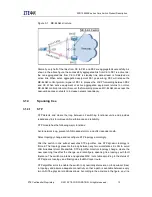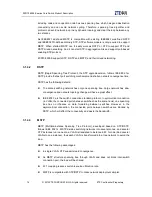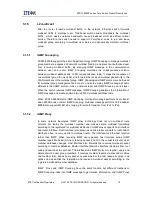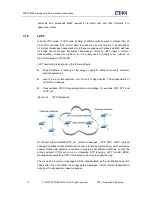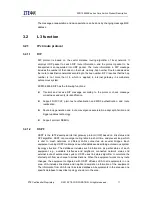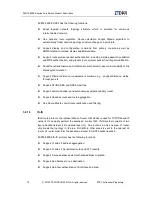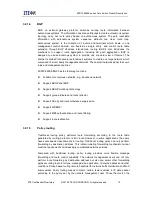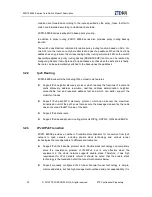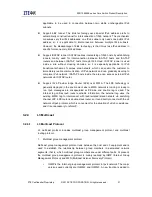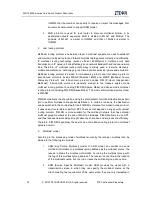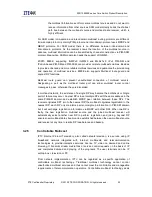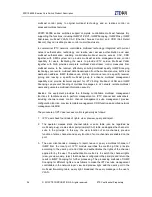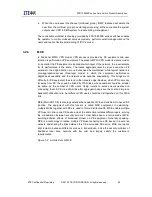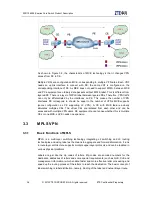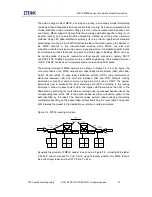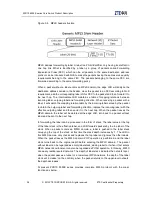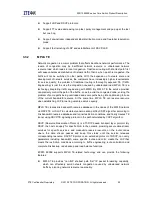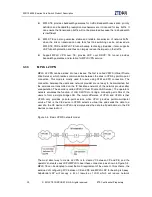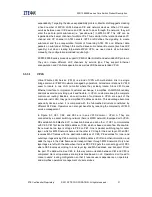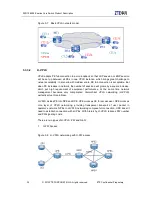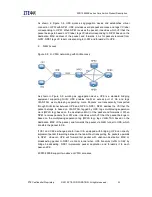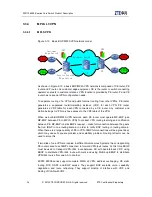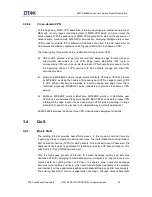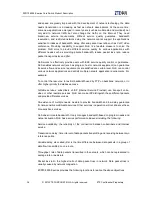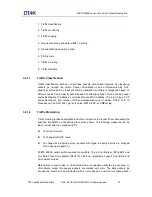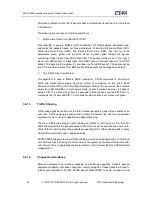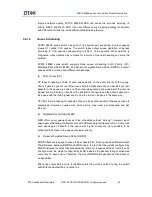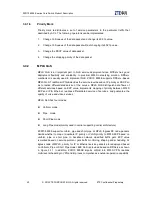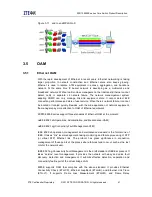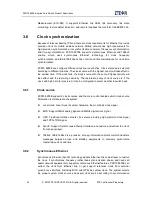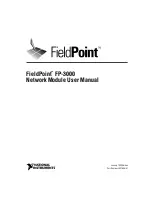
ZXR10 8900E series Core Switch Product Description
ZTE Confidential Proprietary
© 2013 ZTE CORPORATION. All rights reserved.
27
The basic routing mode of MPLS is hop-by-hop routing, which allows simpler forwarding
mechanism than data packets and can realize faster routing. As it uses universal method
of label distribution and universal routing protocol on various media (such as packet, cell
and frame), MPLS supports highly efficient and widely applicable specific routing (such
as QoS routing) and universal traffic engineering method as well as other operation
methods. Using LDP (label distribution protocol), its core protocol, together with standard
network layer routing protocol, MPLS distributes label information among the devices in
the MPLS network in the connectionless working mode. MPLS can also use
connection-oriented working mode, namely, signaling protocol to establish specific routes
for multimedia services that need long time and QoS support. Besides, MPLS can use
the working mode of resource reservation without specific connection, namely, RSVP
and RSVP-LSP-TUNNEL protocols, mainly in traffic engineering. The extended protocol
of LDP, CRLDP can be used to implement some routes with specific paths.
The working principle of MPLS network is as shown in Figure 3-4. From the figure, the
core components of an MPLS network are: Label Edge Switch Router (LER) and Label
Switch Router (LSR). Through label distribution protocol (LDP), label information is
distributed between LER and LSR and between LSR and LSR. Network routing
information comes from some common routing protocols, such as OSPF. The system
determines how to establish the label switching path (LSP) according to the routing
information. When a packet enters LER, the ingress LER determines the LSR to the
destination by searching the route table according to the input packet header, inserts the
corresponding label of the LSP to the packet header and then outputs the packet to the
path identified by the label. The network nodes perform label switching forwarding
completely depending on the packet label without searching the route table. The egress
LER forwards the packet to the destination according to certain principles.
Figure 3-4 MPLS working principle
Generally the structure of MPLS header is as shown in Figure 3-5, including 20-bit label,
3-bit EXP, commonly used for CoS, 1-bit S, used to identify whether this MPLS label is
the bottom layer label, and 8-bit TTL (Time To Live).
In
Out
3
6
8
3
6
LSR
LSR
In
Out
3
In
Out
6
8
In
Out
8
Ingress
LER
Egress
LER
LDP
IP
Route processing
LDP
LDP
Summary of Contents for ZXR10 8900E series
Page 1: ...Operator Logo ZXR10 8900E series Core Switch Product Description ...
Page 2: ......
Page 10: ......

